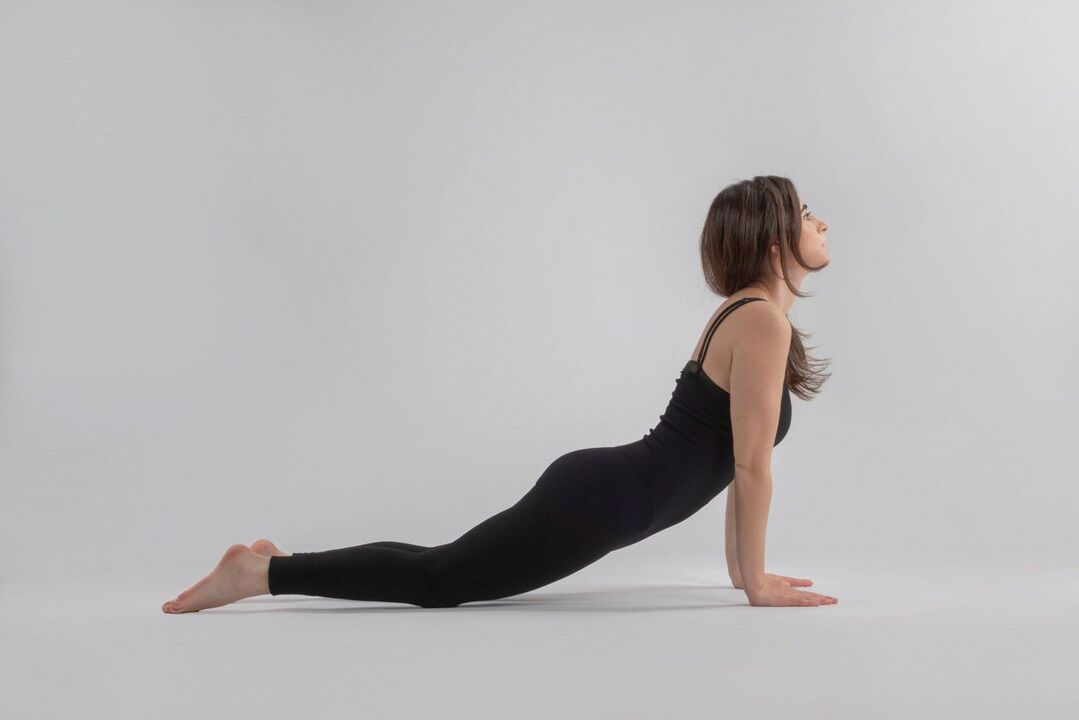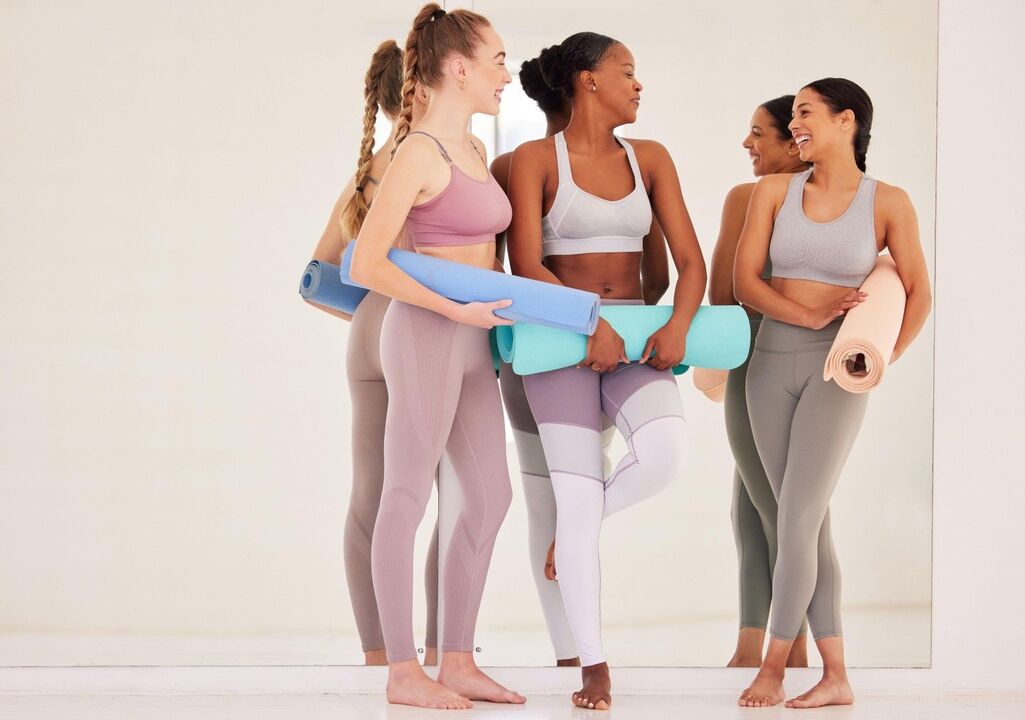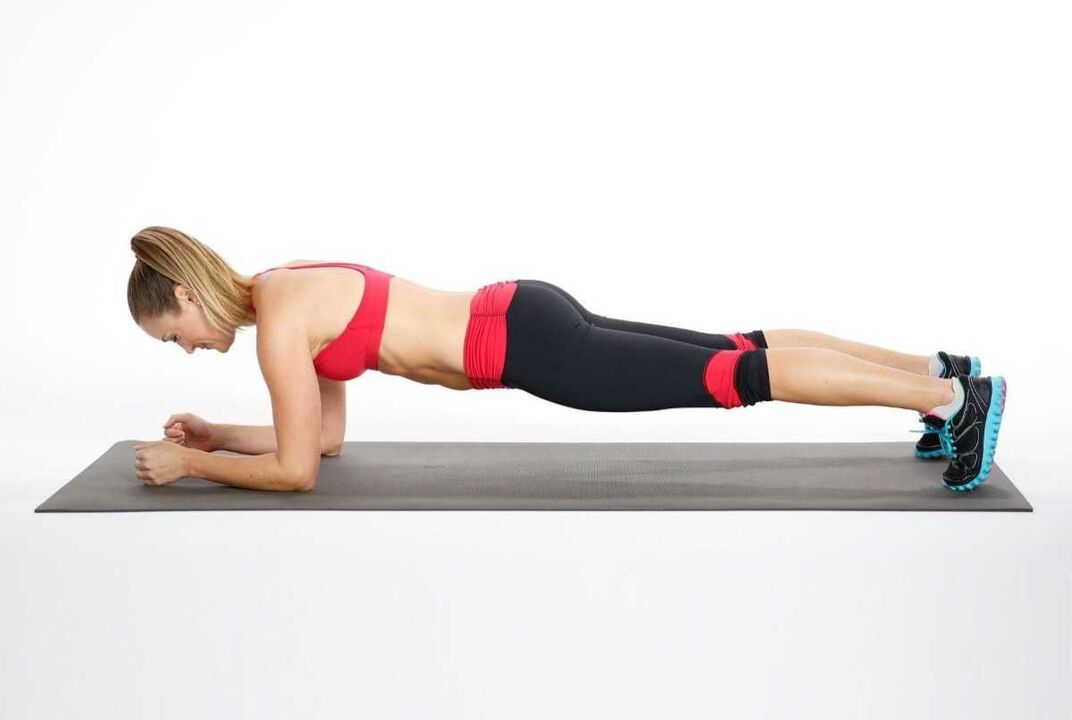Over the last decade, the plank exercise has become incredibly popular. The plank is simple and accessible to everyone and gives amazing results after a month of daily practice. A wave of flash mobs, video tutorials and online marathons about planks have swept the Internet, promising unfailing success in the fight against excess weight. The exercise is used in many training complexes, is often included in treatment programs and is perfect for home training.
What is a plank?
The plank is a static exercise that comes from yoga and is classified as isometric: contraction of the muscles involved without changing the posture. It's hard to overestimate the benefits of the plank, because this exercise is one of the key exercises for strengthening the core - the corset of muscles that includes the stomach, back and sides. In the complexes of power yoga exercises, the pose when performing the plank is called a pose for developing balance and strength.
There are different types and variations of plank complexity that involve different muscle groups. The essence of the exercise is to stand in the pose for as long as possible, supporting yourself on four limbs - palms (elbows) and toes - thereby forming an even line almost parallel to the floor. When positioned correctly, there is a harmonious contraction of all working muscles in the body.

Does planking help remove belly fat?
The plank is an excellent exercise for training the muscle corset, abdomen, back, shoulders and neck, helping to maintain overall body tone. But the plank alone cannot guarantee the effectiveness of burning belly fat. The majority of the world's population, leading a sedentary and sedentary lifestyle, accumulates reserves of visceral (internal) fat, which is necessary to protect the abdominal organs. But excess visceral fat leads to abdominal obesity - on the stomach and sides. You can counteract excess deposits by calculating your diet and physical activity so that you consume more calories during the day than you get from food. Without a daily calorie deficit, exercise only helps strengthen the body's muscles. Your abdominal muscles will be toned, your posture will be straightened and only then will the belly fat gradually begin to disappear.
One of the leading exercises in the complex to combat belly fat is the plank. For newbies in weight loss, the duration of application starts from 10 seconds. When carrying out the procedure, the most important thing is to use the correct posture, otherwise the desired effect will not be achieved.
Benefits of the plank
The main advantage of the plank over other exercises is the accessibility of its execution: they require a more or less flat surface, desire and a little time. If you start the day without getting up with a short warm-up including a plank, the body wakes up quickly, the muscles are saturated with oxygen and the sympathetic nervous system is excited and prepares itself for the stress of the day. If possible, it is worth standing on a plank several times a day to tone the body, especially during sedentary work.
In addition, performing this exercise methodically over a longer period of time helps:
- tighten your stomach, make your back straight;
- relieve tension in the muscles of the spine and shoulder girdle;
- Improving blood circulation and oxygen supply to the body's cells;
- develop a sense of balance and equilibrium;
- increase the body's endurance to physical activity.
Like any physical activity done with pleasure, planking stimulates the production of the happiness and good-mood hormones serotonin and dopamine.

Contraindications
Despite this simplicity and accessibility of the exercise, there is a group of people for whom performing the plank is either limited or completely contraindicated:
- for injured spine, intervertebral hernia, displaced intervertebral discs;
- after major operations;
- during the period of colds and viral diseases or exacerbation of chronic diseases;
- for cardiovascular problems;
- in the last trimester of pregnancy and immediately after the birth of the child.
Women should perform planking with caution during their menstruation. Overloading the lower abdominal muscles is dangerous due to bleeding and cramps.
How long should you stand on the plank?
The time of standing on the plank is chosen depending on the condition of the body and physical fitness. For inexperienced people, the instructors recommend starting with several approaches with 10-20 seconds and taking breaks of 10 seconds. Gradually the load can be increased to 30-40 seconds. If you are serious about getting in shape and planning long-term exercises, you can create a personal schedule for several weeks and gradually increase the exercise time to 3-5 minutes. Do not overdo it or try to stand for too long in the first few days, as this can cause overload and destruction of muscle fibers.
How often do you do a plank?
To achieve noticeable results, regular exercise is important. Spend a few minutes on the plank every day, morning and evening. If possible, avoid standing in the plank position for long periods of time throughout the day. Remember that exercise strengthens your body and relieves back tension and neck fatigue. The evening approach should be done no later than an hour before bedtime.

Here's how to do it right
Proper plank technique produces significant results. When planking, don't forget about the position of your arms, legs, and torso. The classic plank requires precise placement.
- Palms of outstretched arms (or elbows bent at right angles) rest at right angles on the floor;
- the feet are raised and resting with the tips of the toes on the floor;
- the position of the body is almost parallel to the ground surface, the body is frozen in immobility;
- the eyes look straight downward, the neck is a straight continuation of the body;
- the lower back does not bend, the stomach does not sag;
- all muscles are tense.
The closer your feet are together, the harder it is to hold the plank. Violations of applicable rules can lead to damage to health.
For beginners
If you have decided to use the plank for weight loss and have set the goal of increasing the training time to 4-5 minutes per approach, start performing the plank according to a ready-made program. Connect a trainer and a doctor and let their recommendations help create a comfortable and high-quality schedule for you.
If you decide to practice alone, it is best to start plank training by performing the classic variation, gradually increasing the load and adding more complicated versions of the exercise. A sample plan for the first days of classes looks like this:
- In the morning, after waking up and doing a short warm-up, 4 sets of a maximum of 20-40 seconds with a rest of 10-12 seconds, forming a mini-series that you can repeat several times if you still have strength ;
- In the evening, an hour before dinner or at least an hour after, the mini-series should be carried out several more times.
The variation on the elbows is considered more difficult, so it is best for beginners to stand on a plank with your arms outstretched.

For men
The plank routine for men is slightly different from the female version due to physiological characteristics. Nature designed the male body to be resilient and adapted to pulling heavy objects and moving quickly over long distances. That is why men have more developed legs, arms, back and shoulder girdle. Executing a plank in the male version can be complicated even for beginners by different types of this exercise: side plank, plank with alternating lifting of the limbs - 4-5 times for 30-40 seconds, repeating the mini-series 3-4 times.
For women
The female body has always been adapted to create a "protective belt" on the stomach and sides to protect future offspring - this is how nature intended. Due to the general tendency to build up excess fat in the abdominal area, the plankalmost a panacea for women. It helps to strengthen the muscles of the problem area, arms and legs, and prevents osteochondrosis and age-related problems with the back and cervical spine.
Types of boards
There are different variations of the plank exercise:
- classic on the elbows;
- classic full on arms;
- classic with raising a limb;
- lateral right and left;
- sideways with leg raised;
- reverse or mirror.
From the full classic plank position:
- touch your shoulder diagonally with your hand;
- alternately lifting your knee towards your chest.
For best results, move from simple to more complex types.

Plank technique
Remember the most important "DON’Ts" that you should not miss when training:
- Do not let your lower back and chest fall below your elbows.
- do not throw up your buttocks;
- Turn your head so that your neck remains motionless and your eyes look at the floor.
Maintaining the correct technique when performing the plank is the key to achieving your goal - losing weight, strengthening your core muscles and an elegant, athletic figure.













































































